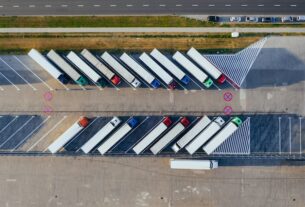By Anshul Popli, Senior Vice President Retail Industry, o9 Solutions; and Vikram Murthi, Vice President Industry Strategy, o9 Solutions
When the pandemic hit in March 2020, demand for home improvement items, tools, furniture and electronics spiked. Employees that could work remotely invested in new furniture, computers, monitors, and electronics to set up their home offices, and bought toys and computer games to keep their children occupied as schools were closing. Consumers moved to purchasing online and pushed hardline retailers to scramble and offer home delivery and click-and-collect options.

The intensity of the demand surge created severe shortages in various hardline categories such as appliances and home furnishing. To restock their depleted inventory, hardline retailers had been ordering products for their customers. However, the longer lead time during the pandemic coupled with the logistics disruptions prevented items from hitting the shelves. As the inventory started arriving, consumer preferences had shifted with businesses, entertainment venues and travel opening up.
This phenomenon led to a glut of inventory, forcing retailers to discount items such as seasonal products, electronics, and televisions. The proverbial bullwhip effect with volatility in demand – in this case moving from a low level to a high level and then back to lower levels, has led to excess inventory and markdowns and squeezing profits. The need for hardline retailers to be much more agile in responding to market changes has never been greater.
After the Pandemic: Building Towards a More Agile Future
What can hardline retailers do to prevent the inventory issues they have faced over the last couple of years? Below are some strategies for consideration:
Invest in inventory visibility: A key capability is the ability to see inventory close to real-time with a high degree of accuracy. Beyond inventory visibility, retailers must be able to sense demand signals and translate them rapidly into decisions – such as pushing out or cancelling purchase orders, as well as allocating supply to regions and channels with the most anticipated sell through.

Leverage external drivers to forecast demand: The pandemic has highlighted the value of using predictive modeling as an integral part of supply chain decision making. For example, the use of mobility indexes, such as people movement and traffic patterns, regions with rising COVID cases, as well as school openings and closings, were being leveraged by more advanced retailers to understand the shifting channels of delivery based on demand and purchasing patterns. Machine Learning (ML) techniques came to the forefront since they are able to incorporate numerous demand drivers in a scalable manner. The same modeling techniques are being used by forward-thinking retailers to better understand how demand is changing in localized micro-markets, and where to place inventory for efficient replenishment.
Digital twin to the rescue: Beyond AI/ML, retailers benefit from other newer technologies like the digital twin, which is essentially a digital representation of the physical supply chain where every asset (storage, labor, transportation lanes) can be modeled and therefore analyzed in real time to determine the next best action when exception conditions are detected. With the application of AI/ML techniques on the underlying digital twin, retailers can evaluate trade-offs between demand, sourcing, transportation, service levels, network flow paths and inventory in a holistic fashion.
Continuous planning and execution: This goes without saying, but the recent response of retailers to the pandemic point to the need for organizational changes that will help them be better prepared for future shocks to the system – either from the demand side or the supply side or both. Retailers should eliminate silos across the lines of business, and build the internal expertise needed to be able to manage the supply chain starting at the outbound docks of the Tier-1 supplier or even at the Tier-2 or Tier-3 level. These organizational changes will better enable retailers to sense demand shifts, develop and implement flexible sourcing strategies and right-size capacity well in advance to align with changing product flows.
A Wake-Up Call for the Hardlines Industry
While the worldwide COVID-19 pandemic brought many supply chain challenges that were percolating to a full boil, the shock to the system it created is pointing to a new baseline that will determine tomorrow’s retail winners. They need to consider various process and systems changes as they look to drive excellence in their supply chains.
Pandemic outbreaks have been added to the general thinking around supply chain disruptions as the result of ecological and weather events, labor strikes, geopolitical events, disasters at manufacturing facilities, or fear of pandemics. But the reality is that disruptions can occur on the demand side too – sudden shifts in consumer behaviors and preferences as well as product recalls. Risks on either side must be balanced against each other. Using AI/ML-enabled analytics, forward-thinking retailers simulate – or model – various risk scenarios to find the right balance between unplanned disruptions on the supply side and sudden changes on the demand side.
“Agility” is now not only based on how well retailers and their partners respond to sudden changes on the supply side, but also how adept they are at shifting strategies in response to sudden changes in demand.


